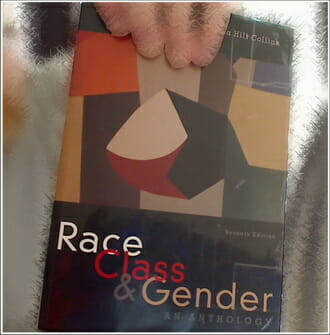Biased Education


Educational Indoctrination | Dennis Prager Interviews Lee Habeeb
Dennis Prager had Lee Habeeb on to discuss his article entitled, “Are All White People Racists? One Leftist School Is Teaching This.” In it Lee makes crystal clear the goals of organizations like this that make school principles and superintendents “feel good” about themselves – as if they are participating in fighting evil, thus, putting on the moniker of “social justice warrior.” A great interview!
- Lee Habeeb’s bio can be found HERE;
- Many of his National Review articles are HERE (as well as his older TOWNHALL articles);
- Follow “Our American Stories” on TWITTER.

Least Diverse Places in America (PragerU)
What is the least diverse place in America? It’s the institution that most actively seeks racial, ethnic, gender, and cultural diversity: the college campus! Colleges want students to look different, but think the same. Charlie Kirk, founder of Turning Point USA, explains.

The Cultural Roots of Campus Rage ~ Jonathan Haidt
Comments by Dennis Prager are at the bottom.
This is a great article via the WALL STREET JOURNAL. I clipped the base of the article as it might not be viewable at WSJ’s website. A great and insightful read (h-t to Dennis Prager):
When a mob at Vermont’s Middlebury College shut down a speech by social scientist Charles Murray a few weeks ago, most of us saw it as another instance of campus illiberalism. Jonathan Haidt saw something more—a ritual carried out by adherents of what he calls a “new religion,” an auto-da-fé against a heretic for a violation of orthodoxy.
“The great majority of college students want to learn. They’re perfectly reasonable, and they’re uncomfortable with a lot of what’s going on,” Mr. Haidt, a psychologist and professor of ethical leadership at New York University’s Stern School of Business, tells me during a recent visit to his office. “But on each campus there are some true believers who have reoriented their lives around the fight against evil.”
THESE BELIEVERS ARE TRANSFORMING THE CAMPUS FROM A CITADEL OF INTELLECTUAL FREEDOM INTO A HOLY SPACE—WHERE WHITE PRIVILEGE HAS REPLACED ORIGINAL SIN, THE TRANSGRESSIONS OF CLASS AND RACE AND GENDER ARE CONFESSED NOT TO PRIESTS BUT TO “THE COMMUNITY,” VICTIM GROUPS ARE WORSHIPED LIKE GODS, AND THE SINNED-AGAINST ARE SUPPLICATED WITH “SAFE SPACES” AND “TRIGGER WARNINGS.”
The fundamentalists may be few, Mr. Haidt says, but they are “very intimidating” since they wield the threat of public shame. On some campuses, “they’ve been given the heckler’s veto, and are often granted it by an administration who won’t stand up to them either.”
ALL THIS HAS BECOME SOMETHING OF A PREOCCUPATION FOR THE 53-YEAR-OLD MR. HAIDT. A LONGTIME LIBERAL—HE RAN A GUN-CONTROL GROUP AS AN UNDERGRADUATE AT YALE—HE ADMITS HE “HAD NEVER ENCOUNTERED CONSERVATIVE IDEAS” UNTIL HIS MID-40S.
[…..]
“What we’re beginning to see now at Berkeley and at Middlebury hints that this [campus] religion has the potential to turn violent,” Mr. Haidt says. “The attack on the professor at Middlebury really frightened people,” he adds, referring to political scientist Allison Stanger, who wound up in a neck brace after protesters assaulted her as she left the venue.
The Berkeley episode Mr. Haidt mentions illustrates the Orwellian aspect of campus orthodoxy. A scheduled February appearance by right-wing provocateur Milo Yiannopoulos prompted masked agitators to throw Molotov cocktails, smash windows, hurl rocks at police, and ultimately cause $100,000 worth of damage. The student newspaper ran an op-ed justifying the rioting under the headline “Violence helped ensure safety of students.” Read that twice.
Mr. Haidt can explain. Students like the op-ed author “are armed with a set of concepts and words that do not mean what you think they mean,” he says. “People older than 30 think that ‘violence’ generally involves some sort of physical threat or harm. But as students are using the word today, ‘violence’ is words that have a negative effect on members of the sacred victim groups. And so even silence can be violence.” It follows that if offensive speech is “violence,” then actual violence can be a form of self-defense.
Down the hall from Mr. Haidt’s office, I noticed a poster advertising a “bias response hotline” students can call “to report an experience of bias, discrimination or harassment.” I joke that NYU seems to have its own version of the morality police in Islamic countries like Saudi Arabia. “It’s like East Germany,” Mr. Haidt replies—with students, at least some of them, playing the part of the Stasi.
How did we get here, and what can be done? On the first question, Mr. Haidt points to a braided set of causes. There’s the rise in political polarization, which is related to the relatively recent “political purification of the universities.” While the academy has leaned left since at least the 1920s, Mr. Haidt says “it was always just a lean.” Beginning in the early 1990s, as the professors of the Greatest Generation retired, it became a full-on tilt.
“Now there are no more conservative voices on the faculty or administration,” he says, exaggerating only a little. Heterodox Academy cites research showing that the ratio of left to right professors in 1995 was 2 to 1. Now it is 5 to 1.
The left, meanwhile, has undergone an ideological transformation. A generation ago, social justice was understood as equality of treatment and opportunity: “If gay people don’t have to right to marry and you organize a protest to apply pressure to get them that right, that’s justice,” Mr. Haidt says. “If black people are getting discriminated against in hiring and you fight that, that’s justice.”
Today justice means equal outcomes. “There are two ideas now in the academic left that weren’t there 10 years ago,” he says. “One is that everyone is racist because of unconscious bias, and the other is that everything is racist because of systemic racism.” That makes justice impossible to achieve: “When you cross that line into insisting if there’s not equal outcomes then some people and some institutions and some systems are racist, sexist, then you’re setting yourself up for eternal conflict and injustice.”
Perhaps most troubling, Mr. Haidt cites the new protectiveness in child-rearing over the past few decades. Historically, American children were left to their own devices and had to learn to deal with bullies. Today’s parents, out of compassion, handle it for them. “By the time students get to college they have much, much less experience with unpleasant social encounters, or even being insulted, excluded or marginalized,” Mr. Haidt says. “They expect there will be some adult, some authority, to rectify things.”
Combine that with the universities’ shift to a “customer is always right” mind-set. Add in social media. Suddenly it’s “very, very easy to bring mobs together,” Mr. Haidt says, and make “people very afraid to stand out or stand up for what they think is right.” Students and professors know, he adds, that “if you step out of line at all, you will be called a racist, sexist or homophobe. In fact it’s gotten so bad out there that there’s a new term—‘ophobophobia,’ which is the fear of being called x-ophobic.”
That fear runs deep—including in Mr. Haidt. When I ask him about how political homogeneity on campus informs the understanding of so-called rape culture, he clams up: “I can’t talk about that.” The topic of sexual assault—along with Islam—is too sensitive.
It’s a painfully ironic answer from a man dedicating his career to free thought and speech. But choosing his battles doesn’t mean Mr. Haidt is unwilling to fight. And he’s finding allies across the political spectrum.
[….]
Following the Middlebury incident, the unlikely duo of Democratic Socialist Cornel West and conservative Robert P. George published a statement denouncing “campus illiberalism” and calling for “truth seeking, democracy and freedom of thought and expression.” More than 2,500 scholars and other intellectuals have signed it. At Northwestern the student government became the first in the country to pass a resolution calling for academic freedom and viewpoint diversity.
[….]
He offers this real-world example: “I think that the ‘deplorables’ comment could well have changed the course of human history.”

Do College Students Know What NAZI Means?
Via CHICKS on the RIGHT:


Young-Earth Creationist Wins Lawsuit Against CSUN
Previously I noted this in my Dinosaur post… this however is Dr. Armitage explaining in more depth the lawsuit and the topic that caused the ruckus.
The attorney did not state the exact amount he received but according to THE COLLEGE FIX, he said that it was “a substantial settlement representing about 15 times his annual part-time salary.”
CSUN still maintained that Armitage had been fired due to a lack of funding and claimed that it only settled the case to avoid a costly legal battle. Reinach acknowledged that there was no admission of guilt in the settlement but he believed that the university would not pay a large amount if it did not think it would lose the case.
“The evidence was quite clear,” he added. “The stated reasons for saying they fired him were simply not true. There were lies and contradictions abounding from several of the key witnesse,” Reinach continued. He said evidence against the campus officials was seen in an email suggesting that Armitage could be eased out of the job by making his position full-time. “Not only did it not support the notion that there was budgetary concerns, but in fact suggested to the contrary,” said Reinach

Gender Gaps In Education (Updated)
(Updated with a Post-Script)
A recent conversation made some connections to the final statement made in this clip about the very small gender wage gap left — after all things being equal are considered — may in fact be innocent. Not, in-other-words, the evil patriarchy keeping women down.
During the conversation some points were made that made clear some of these “innocent” aspects of the wage gap or even a disparity in women superintends in education. The two points made were that women wait too long to jump on a promotion, and, they do not negotiate for the pay they feel they are worth. While we all could use help in negotiating skills, this may be a natural aspect to womanhood and not one attributed to a patriarchal activity.
Having read through a couple studies years ago to help formulate thinking on a response to Matt Damon’s claim that teachers are not payed well. After this recent conversation however, I revisited a larger swath of reading on the topic. It took me a couple days, but I read through the following:
- Few Women Run the Nation’s School Districts. Why? (Education Week);
- Where Are All the Women Superintendents? (AASA);
- 1 in 5 school districts are now led by women (Houston Chronicle);
- Women in the Superintendency: Opting In or Opting Out? (Journal of Women in Educational Leadership);
- Characteristics of Public and Private Elementary and Secondary School Principals in the United States (U.S. Department of Education);
- Superintendents and Principals: Charting the Paths to School Improvement (Ed Source).
- Why Men Don’t Teach Elementary School (ABC News)
While many of these articles/studies mention gender bias… in them are more than enough reasons to suppose the differences that occur naturally between men and women account for the totality of the disparity. This doesn’t mean that there is not patriarchal biases, JUST LIKE there doesn’t mean there are matriarchal one’s as well. The point is that the rule we see is better explained by choice made by women in the West that is freer than anywhere else in the world.
This post deals less with the wage gap and more with a gap of female school superintendents as compared to male superintendent. HOWEVER, the same gross negligence of not comparing “apples-to-apples” stains any credibility in this regard… here are two quick examples:
Similarly, when you hear:
- Of our nation’s 13,728 superintendents, 1,984 today are women. Yet 72 percent of all K-12 educators in this country are women, according to the U.S. Department of Education.
…something is not adding up. Here are five quick examples of divergences that go towards explaining this divergence noted above:
- Of the 297 women superintendents in the AASA study, 130 were former elementary teachers. Thus more than half came from a secondary background where men teachers are a considerable majority.
- Coaching activities traditionally have provided secondary and junior high teachers with an initial step toward administration.
- Women also are achieving the doctorate at comparable rates to male candidates. However, about only 10 percent of women in doctoral programs are opting to earn the superintendency credential along with their educational specialist or doctoral degree.
- Women are not as experienced nor as interested in districtwide fiscal management as men (and school boards prefer this).
- The role of a mother probably restrains many women teachers from pursuing the principalship.
So yes, if you compare ALL women and men and ignore differences, it looks bad. If you start to do what an economist does and ask questions about WHY or WHAT possible factors may contribute to the disparity we see, then the gap starts to be explained. Everyone should ask the minimal questions:
- Compared to what?
- At what cost?
- What hard-evidence do you have?
The rest of this post is basically commentary on the above linked studies or quoting from them. The two most used are:
- Few Women Run the Nation’s School Districts. Why? (Education Week);
- Where Are All the Women Superintendents? (AASA);
RPT’s Commentary
- “I don’t want to be offered a position because I am a woman; likewise, I don’t want to lose a position because I am a woman…”
In the very next paragraph she added,
- “I think it would be naïve to think there are not some stereotypes that exist.”
Like, mmm, I don’t know… being hired because you are a woman and a “number” to fulfill a quota? In this same article qualifications like a degree in superintendent studies or a financial background while statements like these are made:
- which also plagues other sectors trying to address underrepresentation of women, African-Americans, Latinos, and other groups.
- They can say we value diversity, we want women applicants, we want minority applicants…

This particular article had a myriad of unsubstantiated claims that were really non-quantifiable and wholly anecdotal. The worry of that woman quoted above in being chosen merely for gender (or ethnicity) is realized when standards for a job are the modern understanding of diversity as is presented in works like Race, Class & Gender: An Anthology, by Margaret Andersen and Patricia Collins.
Thomas Sowell rightly asked in a speech he gave that “given our limitations, what can we do to make this a better world — and what can we not do?” He responds:
One thing we can do is to try to make better rules — in the law and in schools, for example, — and to see that everybody plays by those rules. What we cannot do, that is, what is not within our intellectual or moral power, is to decide directly who deserves to win or lose, who deserves more income and who deserves less, what groups should be “represented” where and in what proportions.
So here are some bullet points I adapted and commented on:
- approximately 75 percent of elementary classroom teachers are women. Nearly 75 percent of superintendents did not teach at the elementary level prior to working as a central-office administrator or superintendent. [women, when given a choice, would rather teach their passion… younger children. NOT ALL, but most.]
- Nearly all superintendents previously worked as building principals and a majority are former assistant principals. Therefore the ladder from the classroom to the superintendency often begins as an assistant principalship or as a high school department chair. Even though about two-thirds of the nation’s schools are elementary, a small percentage have assistant principals and almost none have department chair positions. Elementary classroom teachers have to jump straight from the classroom to the principalship… [Most women prefer to stay longer in these positions because of more flexibility of hours and family/work life balance.]
- Coaching activities traditionally have provided secondary and junior high teachers with an initial step toward administration. Athletic coaching and assignments such as band directorships often provide teachers an opportunity to demonstrate skills in leadership, management and an ability to work with community members. Today, most secondary schools sponsor at least six interscholastic sports for both boys and girls, which provides at least 12 head coaching jobs. A sizable majority of AASA study superintendents indicated they had a coaching assignment while working as a teacher or building administrator. [Men typically are – again, by their nature – drawn to these activities.]
- Nationwide data indicate that women constitute more than 50 percent of the graduate students enrolled in educational administration programs. Women also are achieving the doctorate at comparable rates to male candidates. However, about only 10 percent of women in doctoral programs are opting to earn the superintendency credential along with their educational specialist or doctoral degree. [These are factors of choice typically.]
- Most data indicate that school boards, while claiming keen interest in the instructional program, see the management of fiscal resources to be a critical component of the superintendency. The AASA study showed that boards place a high degree of emphasis on budget and financial decisions by using skills and experiences in these areas as key hiring criteria. [So some sort of business degree or time in a position that deals with fiscal issues is often times preferred. These opportunities are attained more so in the high school arena.]
- About half of the 297 women superintendents in the study had experience in the central office but very few had responsibilities in personnel and finance. [see above]
- [in the past] [b]oards of education while saying that the instructional program is important do not want an inexperienced superintendent in fiscal management. [This is changing because standardizing tests are requiring differing focuses on outcomes — leading to more women being considered for superintendency.]
- The average superintendent spends more than 50 hours a week at work, including night meetings and sporting events. This type of work week often is not appealing to younger women (or men) accustomed to child-centered teaching in elementary classrooms and to people who prefer a better balance between work and family life. [in modern, rich, Western countries, women are afforded the choice to place family first, and more-often-than-not, do.]
- The role of a mother probably restrains many women teachers from pursuing the principalship–a position they are well acquainted with. Women principals and central-office administrators recognize the time and pressure of the superintendency frequently interfere with family life and choose to spend non-working time with family rather than school board members and citizens. [By the way, Glass follows the above with “socialization” as the root of this difference… not nature. “Scholastics,” when fighting nature (whether God imbued, or millions of years of evolutionary honing, or any combination thereof), will lose every time.]
- Women who do become superintendents spend more years as classroom teachers before moving into the administrative ranks. Women administrators typically spend 7 to 10 years as a teacher while men spend about 5 to 6 years in the classroom. [Again, this may be based mostly on family/child choices, and may make them better at what they do with more experience… however, as my friend stated, women tend to not jump on promotions as quick as men. THIS DOES NOT MEAN anything nefarious is taking place… these choices are more likely to do familial activity as well as the general nature of women not to compete or jump on opportunity as much as men. I would posit this has more to do with the nature of women than the socialization of them.]
- Superintendents are not usually hired from within and have three superintendencies during their career of some 15 to 17 years as the school district CEO. This means the superintendent’s family will be making perhaps four moves after she or he leaves classroom teaching. [The conclusion Glass draws is covered up by gender equity. Women, more than men, wish to stay rooted in their community, placing a higher value on their children not having to “start all over” at another school making new friends versus having life-long ones. So this fact is a major inhibitor for why women CHOOSE to stay in the elementary level versus chasing a career.]
- Nearly 82 percent of women superintendents in the AASA study indicated school board members do not see them as strong managers and 76 percent felt school boards did not view them as capable of handling district finances. [This has little to do with glass ceilings, rather, much of this was already discussed above. While many felt a “glass ceiling” was inhibiting them… I think more-so nature and choices have ~ speaking quantifiably and not anecdotally. Everybody thinks they are on the side of angels… who deserves more pay, a better position, and the like. I think I am worth waaay more than I have ever been paid — hubris to segue way into Sowell…]
Glass made mention of men having more mentors… I agree, for a couple reasons. First, something my wife mentioned that she was told by more than a few professors… if you want to break into the “good ol’ boy club,” play golf. Yep, men bond over sports and friendly competition. This comes more natural for men for a few reasons. One is that they tend more naturally towards this activity of meeting for a couple drinks or on the golf course. During these times they are not complaining as much as trying to solve issues (my wife has pointed out there is more negativity focused on when women meet). Men love more-so friendly competition to destress them and to build bridges of trust and openness.
Men tend to have ways to help each other through relationships that differ somewhat from their female counterparts. For instance, Nora Vincent dressed as a man for 18-months and later wrote a book on the experience. One reviewer at Amazon notes the following:
- As an old-school feminist, I began the book with all the pre-conceived notions about men that we’ve gathered over the years and hugged to our chests. Bam! Norah Vincent dispels all of those and more in this can’t-put-down book. A woman posing as a man. Sensational? Perhaps. However, Ms. Vincent has managed to write an unbiased, often touching and frequently very funny book about the lives men lead. A lasting moment from the book, in my mind: Vincent’s description of a male handshake with another man, warm and welcoming, v. a woman-to-woman hug and air-kiss, superficial and fleeting.(See the 20/20 special on Nora Vincent)
In another article, there was mention of a superintendent referring to a candidate as a bitch.
Unprofessional?
Of course!
But am I being told women have never called a man a dick?
Please.
Glass continues at one point, saying:
- Along with nursing, teaching long represented one of the two most accessible professions for women, who until the recent past were largely excluded from such professions as accounting, dentistry, medicine, engineering and law.
I reject this. As already pointed out, as societies get richer and likes in life/work balance are realized… women CHOOSE these professions (nursing and education) more than men.
Continuing…
- As already mentioned, many women teach in the classroom for more years than men. Other women take several years out for child-rearing. The result is that many women enter the process of moving through the “chairs” to the superintendency too late. AASA’s 10-year studies always have shown that women superintendents are older than their male counterparts with comparable years in the superintendency.
AND THIS IS NOT A BAD THING (*big booming megaphone w/echoing reverb*… FX) As many women who swallowed the lie from feminists via the 60’s mention… they have regrets:
…I never expected to find myself in agreement with Ann Widdecombe on anything, yet I realized when she said last week that her most profound regret is never having had children, that we have something very important in common.
Like her, I didn’t plan it this way; I made no choice to be childless. Like so many other women of my generation, born in the Sixties when the fashionable wisdom was that women should postpone marriage and motherhood to forge careers, I left it [“it” ~ the bad thinking of the sixties and what “feminism” was telling women] too late to have a family. I always assumed it would happen at some stage, but I never gave it the focus it needed.
As a 20-something woman with the world at her feet, I chose to interpret feminism’s gift as the right to education and a career. Were I offering advice now to the young woman I was then, I would say: ‘If you want to marry and have children in your 20s, that is just as valid a choice as building a career. Don’t be afraid to make up your own mind.’…
What can be done? As education changes so too will the roles and natural talents needed in positions withing education. However, to force a change onto education that rejects qualifications for merely seeing gender and ethnicity will in the long run harm educations quality. Like the medical establishment (listen below). Another factor in this equation is that often times the school board members lack specialized knowledge about education and what is needed for their district. I fully acknowledge this. But to say that this gap in gender in superintendents is based on a patriarchy of some sort, is misleading at best.
Concluding Thoughts
What struck me the most about my conversation with this lovely lady? Well, when I brought up a couple studies that undermine the belief about the gender-pay-gap, she mentioned studies as well. I said “great, send them to me.” (We have each-others emails for the readers information.) I was excited that maybe something less anecdotal was going to be presented. I mentioned that after her busy schedule she may want to consider reading my short post on the issue or consider reading Thomas Sowell’s book, Economic Facts and Fallacies, 2nd edition. She quickly responded she would never read anything on the topic.
I was inwardly taken aback, but also had yet another confirmation about how the left approaches issues that marches, policy and deer beliefs are held closely to the vest as true. I doubt this academic woman had ever read anything outside the curricula given to her by her educators. Learning to think in a box incorporating a Marxian view of history and economics based on race, class, and gender is the norm.
You see, she had just mentioned to me how she hates the volatility of the political climate. Shortly thereafter she intimated that she would not budge an iota in her beliefs by blocking out new streams of information into her matrix, possibly changing her mind just a tad considering said new information that previously she may not have been aware of.
— BTW, this IS the definition of ensuring oneself and culture remain volatile —
— by not allowing educational opportunities —
And when women march, people vandalize businesses and set fires (Berkeley for instance sustained over $100,000 in damage) as well as almost kill or permanently maim persons… all based on myths believed to be true (hands up don’t shoot, gender wage gaps, police more likely to shoot a black person, white privilege, war on women, white supremacy, my body my choice, etc., etc.), our climate will continue to become more volatile when even evidence from an opposing viewpoint is ignored out-of-hand.
(More at my GENDER WAGE GAP post)
Post Script
A friend sent this article to me: SEXISM AND ZOMBIE ECONOMICS. I wish to take two examples from it to make the point that these two examples are equal in their showing “sexism.” In other words, they don’t. The first example comes from Emma Watson,
I have experienced sexism in that I have been directed by male directors 17 times and only twice by women. Of the producers I’ve worked with 13 have been male and one has been a woman. I am lucky: I have always insisted on being treated equally and have generally won that equality…. I think my work with the UN has probably made me even more aware of the problems. I went out for a work dinner recently. It was seven men…and me.
This other example comes from the articles author,
Consider the following, real-life scenario. Prior to going to graduate school, I worked at a dance studio for eight years. I can count the number of male dancers I had during that entire period on one hand (our studio had a few hundred students a year). Care to guess how many male instructors there were? None. That’s right, every single student in our studio was “directed” exclusively by females! When we went out to lunch with others, there may be twelve or thirteen women, but no men! Most other studios have similar dynamics. If I said to you, “This proves that the dance industry is sexist!”, you’d look at me like I was insane.
What do these examples prove? Nada, Zilch, Zero.
If the dance had owners that were a substantially higher degree of males than females, as an economist I would look at what is separating (asking questions) WHY this is. If I noticed a larger percentage of them had differing backgrounds, say teaching varsity dance teams versus elementary plays. If they had business or accounting degrees, on-and-on.
What feminism (Leftism) has done is make women weak, in fact, all society. To wit the author of the article, near the end, notes as much:
The author concluded the article by quoting an academic report saying that “longer-term solutions and further monitoring are required,” but he fails to mention what these would be. Allow me to make a suggestion—none. As I have said elsewhere, the idea of legislating “protections” for women in the labor force is downright offensive and counterproductive to gender equality. Think about what message the author of the article is sending by suggesting monitoring. Essentially, “Women are incapable of letting our skills, ambition, and output do the talking for us. We need Big Brother to come and make those mean old men employ us/give us more money/additional benefits.”
Seemingly they always need a knight in shining armor. In this case[s], Big, Obtrusive, Government (BOG).

Public Schools Are for Brainwashing – California Democrat
In this great short review of an article in the LOS ANGELES TIMES speaking about Santa Monica’s own Stephen Miller, we find an admission of the goals of public school education:
Rep. Julia Brownley (D-Westlake Village), who was the Santa Monica-Malibu Unified School District’s board president at the time, remembered Miller showing up at events in coat and tie — “unlike any other student” — to argue against special treatment for immigrants and others.
“He had very conservative views — the exact opposite of what we were trying to accomplish in the school district,” she said.
A good heads up on the article as well as commentary!

Peace Paper Project – Univ. of Wisconsin, Parkside (Liberal Idiocy)
Excerpts from Mark Belling Show, Jan. 9, 2016. SPOILER NOTICE: To avoid spoiling the fun for others, if you share this, please don’t summarize the exact nature of the projects. Let others try to guess at it, or at least fathom it, as Mark gives his detailed description of this almost unbelievable liberal idiocy.

Losing One’s Sexuality at College
Dennis talks to Anna Montrose, a Canadian student who wrote an article in her college newspaper describing her sexual transformation from rigid heterosexual to bi-sexual. (Originally broadcast March 17, 2005)
Higher education teaches them a hate-filled Feminist dogma that heterosexuality is a “social construct,” males are violent predators, and sex with a man is rape. Millions of gullible girls are falling into a diabolical trap intended to make them pursue careers instead of families. As I have said, the purpose is to depopulate and destabilize society by destroying its fundamental building block, the family.
Miss Montrose says in her article:
✦ “It’s hard to go through four years of a Humanities B.A. reading Foucault and Butler and watching ‘The L Word’ and keep your rigid heterosexuality intact. I don’t know when it happened exactly, but it seems I no longer have the easy certainty of pinning my sexual desire to one gender and never the other.”
(BTW: Michel Foucault is a major French “post-modern” philosopher; Judith Butler is a prominent “gender theorist” at UC Berkeley; and “The L-Word” is a popular TV drama about “glamorous” lesbians.)
More from Prager, HERE.

Who Created Sexualized Campuses

Dennis Prager Takes Crazy Pills! (Leftist Radicalism in Education)
Here is the article Dennis is reading from, via THE GLOBE AND MAIL:
…Until recently, Henry Parada was director of the School of Social Work at Ryerson University, Toronto’s big downtown commuter school. His career was going well and he got major research grants. Now he has stepped aside after a handful of students calling themselves the Black Liberation Collective accused him of “a violent act of anti-Blackness, misogyny and misogynoir.” What was this act? It seems that he left a meeting where a black female speaker was giving a talk. No one knows why.
What happened next won’t surprise anyone who has been tracking the steady rise of authoritarian illiberalism on the left. The Black Liberation Collective at Ryerson (which has perhaps the most diverse student body in the nation) issued an escalating series of rants demanding immediate action to address his crimes, along with institutional racism in general. Students disrupted faculty meetings. The administration has issued the standard non-response: Basically it values diversity and inclusion, and is looking into the matter.
But really, it doesn’t matter what Prof. Parada did. He’s a white man, and therefore guilty.
Here’s a partial list of what’s been happening on campus lately. At the University of Toronto, psychology professor Jordan Peterson is under attack – not least by his own administration – for refusing to use invented pronouns for transgender people. (Last year, Kenneth Zucker, a renowned U of T psychiatry professor, was fired from his position at the Centre for Addiction and Mental Health because his treatment of transgender kids was deemed not radical enough.)
At Queen’s, a good-natured off-campus costume party blew up into a crisis over racism. Queen’s principal Daniel Woolf denounced the event on his blog as “the unacceptable misappropriation and stereotyping of numerous cultures,” and solemnly vowed yet again to improve diversity and inclusion on campus. In other news from Queen’s, the head of a student theatre group was forced to grovel after announcing a plan to cast a white female as the lead in Othello. “There is absolutely no excuse for making a casting decision that was oppressive and caused people of colour to feel as though they were invalid,” she apologized. The production was cancelled.
At many campuses, students routinely try to shut down controversial speakers because they might make someone feel queasy. When Marie Henein, Jian Ghomeshi’s defence lawyer, was invited to speak at Bishop’s University early next year and have her lecture live-streamed to other schools, one women’s studies major at St. Francis Xavier said that Ms. Henein’s talk was a “disservice to students who are victims of sexual violence.” To his credit, Bishop’s principal Michael Goldbloom wrote a rebuttal – an unusual act of academic courage these days.
How did we get here? Here’s a very short answer.
University campuses have always leaned a little left. But in the 1990s, as the previous generation of academics was replaced by baby boomers, they began to lean dramatically left. The humanities and social sciences were colonized by an unholy alliance of poststructuralists and Marxists – people who believe that Western civilization is a corrupt patriarchy that must be dismantled.
According to studies of U.S. universities, 18 per cent of social-sciences professors say they’re Marxists. Only 7 to 9 per cent identify as conservative. Leftism in the academy is a positive feedback loop – and we’re now well past the point where the radicals have taken over. Those who don’t agree just shut up. “There’s no question there’s an atmosphere of terror,” one (older, white, male) professor told me.
According to classic Marxist ideology, people’s degree of oppression is determined by their ancestry and class. Today’s identity politics simply swaps in race and gender. But the anti-liberal thinking is the same. When your goal is revolution, dissent becomes intolerable, and you have a moral licence to shut down free speech. As the very liberal Jonathan Chait wrote in New York magazine: “Liberalism believes in political rights for everybody, regardless of the content of their ideas. Marxists believe political rights belong only to those arguing on behalf of the oppressed.”
[…..]
Not so long ago, I thought this craziness would pass. Now I’m not so sure. When institutions cave in to radicals, their demands will only escalate….

